The Blues are caught in a vortex. The NHL is spinning crazily in a scoring frenzy this season, and the Blues are not made for these times. They don’t score enough. They’re being pierced for goals at a disturbing rate. The roster construction has produced a team that can’t go back to a brawny past or accelerate into hockey’s exceedingly fast lane. The Blues are stuck … stuck in a bad place.
Through Sunday, NHL teams are averaging 3.19 goals per game, a pace that would result in the highest scoring binge in a season since 1993-94. The league’s collective power-play success rate, 22.69 percent, would be the highest in a season since 1982-83. This season beleaguered NHL goaltenders have an overall save rate of .904; and that would be the lowest in a campaign since 2005-06.
And we wonder why the Blues are 9-15-1 since opening the season with three straight wins? They can’t keep up with the rapidly evolving trend.
— Their scoring has gone from third-highest in the NHL last season (3.77 per game) to 23rd this season (2.96). Their goals-allowed rate, 11th last season at 2.91 per game, has collapsed to 29th this year with a glaring average of 3.86 yielded per game.
— Their power-play success rate has gone from second in the NHL last season (26.97%) to 16th this season (22.37%.) STL’s feeble penalty–killing unit is the worst in the league, conceding goals at a hideous rate of 34.4 percent when the other side is roaming on the power play.
— The quality of the goaltending is spotty … and I’m being polite here. Stopping the puck is no longer a team strength … unless you’re excited by an .881 save percentage (all strengths) that ranks 31st among the 32 teams.
Who are the Blues, and what is their plan? What’s their style of hockey? The Blues don’t have one. They compete (if that’s the word) without having a clear and unmistakable identity. They aren’t heavy enough to wear opponents down with physical pressure in the attacking zone, cycling and controlling the puck like mad men to exploit the fatigue. That train is derailed.
On the other side of the changing spectrum, the Blues lack speed and passing artistry to be successful at the run-and-gun genre of hockey that represents the NHL’s new way.
Their defensemen aren’t physical, imposing or smart in that instinctual way. The plethora of defensive-zone turnovers has immobilized this team, leaving them flat-footed and vulnerable. Their forwards are (mostly) dull and commit too many mental gaffes.
It’s swell that speed-skating forward Jordan Kyrou has 10 goals this season … problem is, the Blues have been outscored by 20 goals when he’s on the ice at even strength. He doesn’t take care of the puck, and that’s an issue. After averaging 1.71 giveaways per 60 minutes at 5-on-5 last season, Kyrou has turned it over 3.13 times per 60 minutes this year. That’s the fifth-worst rate among NHL forwards that have played a minimum 400 minutes at 5v5 this season.
If you think Kyrou believes an acceptable work ethic is optional now, just wait until his new contract kicks in next season, when the Blues will be on the hook to pay him an average of $8.125 million per season through 2031. Related observation: there’s a lot of bad-contract baggage on this team, eh?
And with too many investments failing to pay off as expected, the Blues are suffering from thinned-out depth. That matters. Remember when the Blues rumbled to a Stanley Cup with Alex Steen, Ivan Barbashev and Oskar Sundqvist forming a devilish, distinguished fourth line? The high-quality depth has eroded, and that’s a factor in the demise.
There’s collective amnesia … yes, amnesia … GM Doug Armstrong has made sure to get most of these fellows paid big money – and in return, the bankroll boys forget what they’re supposed to be doing to make good on the investment. And those who are unlikely to get rewarded with new contracts – Ryan O’Reilly and Vladmir Tarasenko – are collectively minus 20 in even-strength goal differential over the last 10 games. Team record during that stretch: 2-7-1.
The Blues had nine 20+ goal scorers last season. More and more that looks like an outlier. Letting David Perron walk to Detroit as a free agent reduced the firepower and the effectiveness of the power play. Several of the prolific goal scorers from 2021-22 have returned to planet earth. The lack of a sustained attack — and the turnovers — in the offensive zone have lowered the Blues percentage of high-danger chances and goals.
Last season the Blues scored 56.35 percent of the high-danger goals in games. This season they have only 42.8% of the high-danger goals. A big part of this was last season’s unsustainable shooting percentage of 10.42 percent at 5 on 5, the No. 1 mark in the NHL. This season that shooting percentage has normalized to around league average at 8.02%. (Shooting percentage is the percentage of shots on net that end in a goal.)
When Craig Berube took over for the sacked Mike Yeo in late November 2018, it took him a while to implement a new system. But the players took to his leadership, and the Blues became something special. Berube Hockey was built on the premise of having overwhelming strength at 5 on 5, and the Blues bulldozed their way to a championship.
And from the beginning of January 2019 until the end of the regular season, the Blues went 30-10-5. And Berube Hockey gave the Blues a fearsome identity; they just blitzed and rocked opponents with pressure. Those Blues pretty much ruled the NHL world with persistence and forcefulness that carried through the postseason and to the first Stanley Cup in franchise history.
I’ll show you how far the Blues have fallen since that first mission of Berube Hockey. Here’s a “before” and “after” breakdown:
— Percentage of goals scored at 5-of-5: over their final 45 regular-season games the in 2019 the Blues scored 59.88 percent of the 5v5 goals, ranking No. 1 in the league. THIS SEASON: 45.08% of the goals at 5v5, which ranks 28th.
— Percentage of all goals scored: 59.17 percent in the final 45 games of 2019, which ranked No. 2 in the league. THIS SEASON: 43.46% of all goals, ranking 27th in the NHL.
Obviously the goaltending dependability isn’t the same. For example, at 5-on-5 Jordan Binnington and Jake Allen combined for a .934 save percentage over the final 45 regular season games in 2019. This season Binnington and Thomas Greiss have combined for a .909 save percentage at 5v5.
(Then again, we don’t see Alex Pietrangelo, Jay Bouwmeester, Carl Gunnarson or Joel Edmundson patrolling the front of the St. Louis goalies this season.)
It’s a simple and accurate to conclude a few things here: (1) the Blues have lost their way; (2) the Blues are a poor fit for the NHL’s go-go style, with the speed-first approach; (3) even if the Blues tried to play old-school Berube Hockey, they no longer have the pieces and depth to make it work; (4) there are significant issues with the roster construction and payroll distribution.
Welcome to a mess.
The Blues (12-15-1) have trailed on the scoreboard at an average time of 22 minutes 24 seconds per game this season.
That’s the franchise’s worst average losing time since the 2005-2006 Blues trailed by an average of 24 minutes 14 seconds per game while sinking to the bottom record in the NHL with 57 points.
What’s happening with this team isn’t a fluke, or bad luck. With so many games to play (54), a turnaround is theoretically possible. But when every phase of a team’s game is falling apart, how can you possibly fix it all?
We can cite “culture” problems internally. But if there is a culture problem, it exists because of serious, fundamental factors that eventually catch up to an organization that was probably slow to transition in style and personnel. That’s why the roster-construction issues – which also clogged payroll – are more prominent.
You can’t undo those roster decisions right now. You’re pretty much stuck with what you have. And you can’t take back the substantial money that’s been handed out to players that so far have produced the 25th-best points percentage (.446) in the NHL.
And when a team loses its identity and is incapable of cultivating a new style of strategy on the fly, competes with a weakened roster, and doesn’t have salary-cap room to remedy the situation — then the losing is inevitable. But “culture” goes bad when a team goes bad …and it isn’t the other way around.
Now: how do the Blues get out of this? It’s one thing to lose your way.
The hardest part is finding your way back.
Thanks for reading …
–Bernie
Bernie invites you to listen to his opinionated and analytical sports-talk show on 590 The Fan, KFNS-AM. It airs Monday through Thursday from 3-6 p.m. and Friday from 4-6 p.m. You can listen by streaming online or by downloading the show podcast at 590thefan.com or the 590 app.
Follow Bernie on Twitter @miklasz
All stats used here were sourced from Hockey Reference and Natural Stat Trick.




